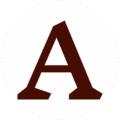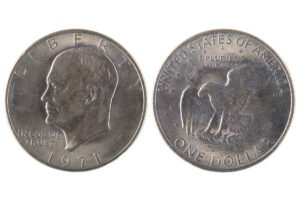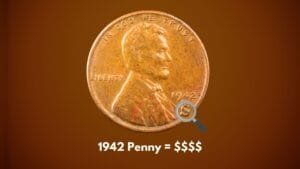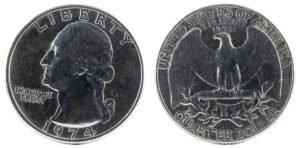The 1937 Buffalo Nickel may not be seen as a rare find, but it holds a lot of historical significance as one of the last mintings of this iconic design! So, if you found a nickel in your pocket with the mint date 1937, you’re likely holding a tangible piece of Americana!
But does this cultural gravity make this coin valuable? Well, you’ll get your answers as I take you through the history, nuances, and anomalies of the 1937 Buffalo Nickel, along with some factors that decide its value and make it a sought-after treasure!
Key Takeaways
- Among the no-mint, S-mint, and D-mint 1937 Buffalo nickels, the 1937 S Buffalo Nickels are the most valuable due to their low mintage.
- The 1937 D Buffalo nickel with the 3-legged Buffalo error is highly sought after and may cost up to $40,000 in the highest grade Mint state.
- If your S or D mint Buffalo nickels bear bold and prominent mint marks, it may be the RPM (re-punched mint) error coin and may be valuable.
- To make sure your 1937 Buffalo nickel is real, look for die lines and other details given below!
Quick History of the Buffalo Nickels
The US Buffalo Nickel coin was designed by sculptor James Earle Fraser and was circulated from 1913 to 1938. Let’s travel back to seek its history:
- 1904: Due to the unartistic looks of the Shield Nickel (1866 – 83) & the Liberty Head Nickel (1883 to 1913), the Mint decided to change the design of the Nickel coin.
- 1907: Sculptor Augustus Saint-Gaudens redesigned the cents and gold coins before passing away in 1907. Then, James Earle Fraser came on board to redesign the nickel with two offered designs: the Buffalo and Lincoln. The Mint finalized the former one.
- 1913: The first Buffalo Nickel coins were circulated with the design of a Native American’s profile (obverse) and an American bison, often mistakenly considered a buffalo (reverse). There were two types circulated: Type I with Raised Ground and Type II with Regular Strike.
- 1916: Minor changes were made to the Buffalo Nickel; the word “Liberty” was made more prominent and moved.
- 1921: The Nickels started becoming less popular due to problems, like extremely raised features, such as bison’s horn and tail, face value number, date, & cheekbones, posing sustainability threats.
- 1937: The 3-Legged Buffalo Nickel was circulated as a mint error.
- 1938: Finally, the Jefferson Nickel replaced the Buffalo Nickel and is circulated to date!
| 1937 Buffalo Nickel | Key Facts |
| Material (Composition) | Copper (75%) & Nickel (25%) |
| Minting Location | Philadelphia |
| Year of Minting | 1937 |
| Weight | 5 grams (Approx.) |
| Diameter | 21.2 mm |
| Designer | James Earle Fraser |
| Face Value | $0.05 |
| Mint Marks | No Mint Mark (Philadelphia Mint)D (Denver Mint) S (San Francisco Mint) |
| Total Mintage (All Facilities) | 102,946,796 |

Design Features of 1937 Buffalo Nickel
The Buffalo Nickel faced a lot of controversy due to its highly-raised reliefs. So, the mint produced altered coins with flattened fields, but the main design remained the same!
1. Obverse (Front) Design:
The 1937 Buffalo Nickel coin bears the following design on its obverse (heads):
- The large right-profile portrait of a Native American man
- Traditional feathers stuck into the man’s hair (on the left side)
- “LIBERTY” written on the top-right of the obverse
- The mint year 1937 written on the bottom left, below the man’s neck
- The letter “F” for Fraser raised below the mint date
2. Reverse (Back) Design:
The reverse (tails) of the 1937 has the following design features:
- A huge American bison (commonly considered a huge buffalo standing to the left on the ground
- Denomination “FIVE CENTS” written below the buffalo
- The mint mark (in Denver & San Francisco mint coins) below the denomination words
- “UNITED STATES OF AMERICA” relief carved along the upper edge of the reverse
- “E Pluribus Unum” written in very small letters between the word “AMERICA” and the bison’s back
3. Coin Composition:
Like its predecessor, the Liberty Head nickel, the Buffalo Nickel followed the same composition of 75% copper and 25% nickel. This composition also raised questions about the coin predominantly being called ‘Nickel’ instead of ‘Bison copper.’
This coin measures 21.2 mm in diameter and 1.95mm in thickness, weighing 5 grams. The old circulated coins’ weight may vary due to weariness and scraped surfaces.
4. Unique Mint Marks & Identifiers:

- 1937 Buffalo Nickel (No Mint Mark): In 1937, the Philadelphia Mint produced over 79 million coins alone. All these coins bear no specific mint marks and are relatively less sought-after and cheaper.
- 1937 S Buffalo Nickel (San Francisco Mint): The San Francisco Mint minted the 1937 S Buffalo nickel coins, with a tiny mint mark “S” carved right below the word “FIVE CENTS” on the reverse.
- 1937 D Buffalo Nickel (Denver Mint): The 1937 D Buffalo Nickels were minted in Denver. These nickels can be identified by the mint mark “D” below the denomination on the tails.
The obverse of the 1937 Buffalo Nickel also has a tiny letter “F” carved right beneath the mint date. This is not a mintmark but the coin’s sculptor James Earle Fraser’s initials.
4 Factors to Value the 1937 Buffalo Nickel Coin
Here are some crucial factors that will help you find the value of your old 1937 Buffalo nickel:
1. Condition and Grading
The 1937 Buffalo nickel had a high-raised design, which faded over time due to high circulation. And that’s why average or poor-condition nickels aren’t worth over $2 – $3.
But if your 1937 Buffalo nickel has been graded by a certified coin grading service like PCGS, NGS, or ANACS, it may value more than ungraded ones, depending on the condition.
I extensively researched sites like eBay and Etsy and prepared a list of estimated values of the 1937 Buffalo coin based on its condition grading.
| Coin’s Condition/Coin’s Name | 1937 Buffalo Nickel (No Mint) | 1937 D Buffalo Nickel | 1937 S Buffalo Nickel |
| Good to Very Fine (VF) | $0 – $4 | $1 – $7 | $1 – $10 |
| Extremely Fine (XF) to Mint State (MS 65) | $6 – $50 | $10 – $25 | $11 – $70 |
| MS 65+ Graded or Uncirculated | $75 – $2,500 | $20 – $5,500 | $100 – $7,500 |
| Highest Resale/Auction Value (Highest Grade) | $29,000 | $17,000 (Approx.) | $22,000 (Approx.) |
2. The 1937 Buffalo Nickel Proof Coin

The Philadelphia Mint produced 5,769 Proof Buffalo Nickel coins in 1937, specially made for collections and worth much more than regular 1937 nickels.
Based on our research, the average price of a Mint State (PF 65+) 1937-proof Buffalo nickel ranges from $1,500 – $8,000 in the market. But rare PF68 or higher graded proof coins have been sold for up to $40,000.
So, to know if your 1937 Nickel is a proof coin, here’s what you must know:
- No mint mark as they were all minted in Philadelphia
- Made with special dies with customized planchets
- A strong contrast between the coin’s background and the Bison (reverse) and the Native American man’s relief carving
- Clear and crisp letters, images, mint marks, & digits
3. 1937 Buffalo Nickel Coin Mintage & Rarity
The total mintage of the 1937 Buffalo Nickel is 102,946,796.
Among these, the mintage of regular Buffalo Nickels minted in Philadelphia was the highest, followed by the mintage of 1937 D Buffalo Nickels (Denver Mint) and 1937 S Buffalo Nickels with the lowest mintage.
| Buffalo Nickels | Mintage |
| 1937 Buffalo Nickel (No Mint) | 79,485,769 |
| 1937 D Buffalo Nickel | 17,826,000 |
| 1937 S Buffalo Nickel | 5,635,000 |
This clearly means that if your nickel has the “S” mint mark on the reverse, it’s rarer and more valuable than Buffalo nickels with the mint mark “D” or no markers at all!
4. Unique Errors in 1937 Buffalo Nickels

1. The 1937-D “3 Leg” Buffalo Error: The 3-legged buffalo design is one of the most popular and sought-after errors in the buffalo nickel. Caused by over-polishing to remove marks from a reverse die, this minting error vanished one of the bison’s forelegs.
The 1937 D 3-legged Buffalo Nickels can fetch from $350 – $700 in good to extremely fine condition. The pristine (AU, MS, MS+) grade 3-legged nickels, however, can cost up to $2,000 – $5,000, with some new coins costing up to $40,000.
2. Re-punched Mint Mark: Some of the 1937 (S and D) Buffalo nickels may also have the re-punched mint mark. It means that the mint marks S or D were punched twice or more, making it more prominent and bold.
Pick the Real 1937 Buffalo Nickel!
The coin market is full of counterfeits and fakes to fool you, especially for coins as popular as the 1937 Buffalo nickel. While a third-party grading service can easily tell if your coin is fake or real, you can do this yourself!
So, look for these features in your nickel to know if it’s a fake:
- Tooling/alteration or chisel marks on Buffalo’s missing leg
- Strong details on the buffalo’s hind legs (which are less prominent in real coins)
- Visible die lines and characteristics
- The letters ‘P’ and ‘U’ of ‘E. Pluribus Unum’ on the top right, touching the Bison’s back
Is a 1937 Buffalo Nickel silver?
No, the 1937 Buffalo Nickel, like the nickels from the 1860s, is entirely composed of 75% copper and 25% nickel. While its surface looks silvery, there’s no silver in its composition.
What makes a 1937 Buffalo nickel rare?
Although the regular 1937 Buffalo nickels are not considered rare due to their large mintage, the ones minted in San Francisco with the “S” mint mark are less in numbers and, therefore, rare. Also, the 1937 D 3-legged Buffalo nickels from Denver are rare & valuable, too!
With their unique errors, design features, and historical significance, the 1937 Buffalo Nickels hold a special place in American denomination history. So, if you love collecting coins, don’t forget this special Buffalo nickel or the special 1896 Indian Head Penny I’m going to tell you about!
Note: This article is intended for informational, educational, and entertainment purposes only. Some images are illustrative and may not represent actual brands, products, or related entities. All trademarks, product names, brand logos, packaging, and other intellectual property referenced remain the exclusive property of their respective owners. Any brand mentions or references are provided solely for descriptive and educational context and do not imply any formal or commercial association.










